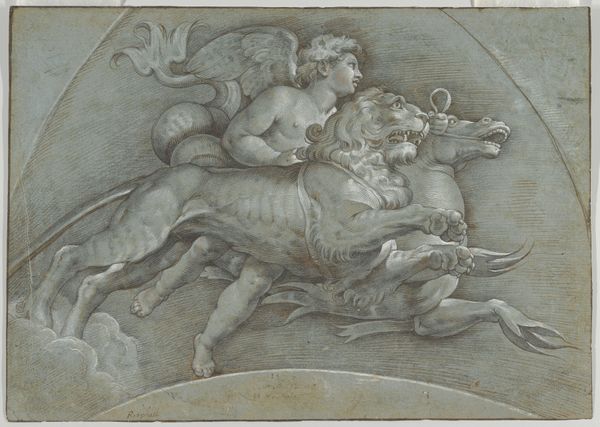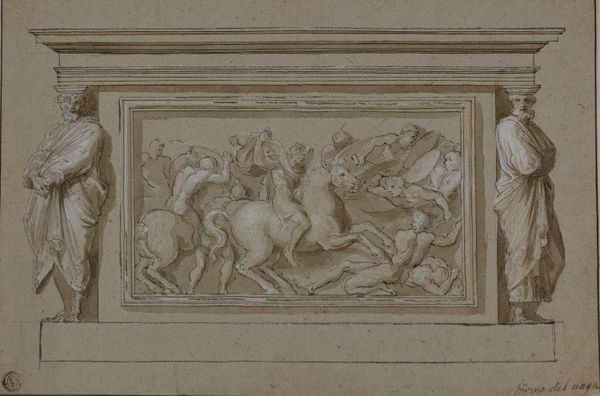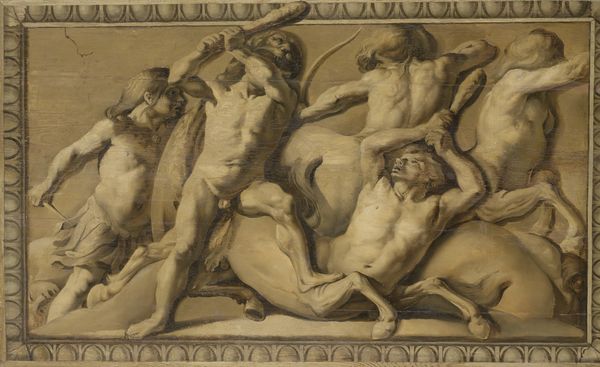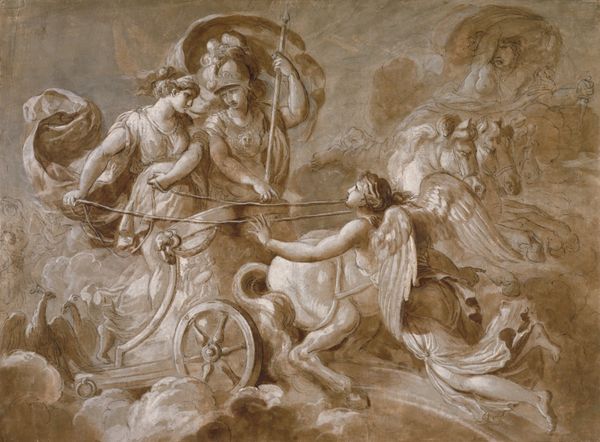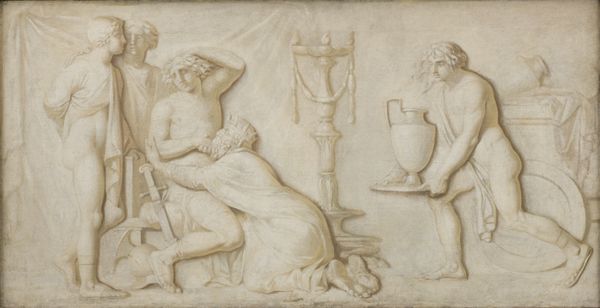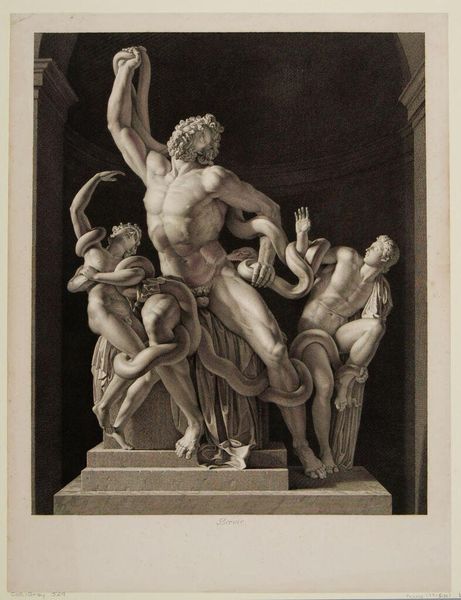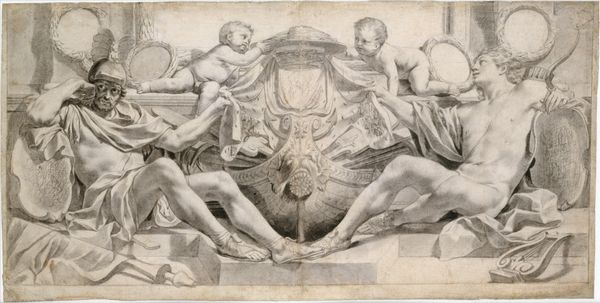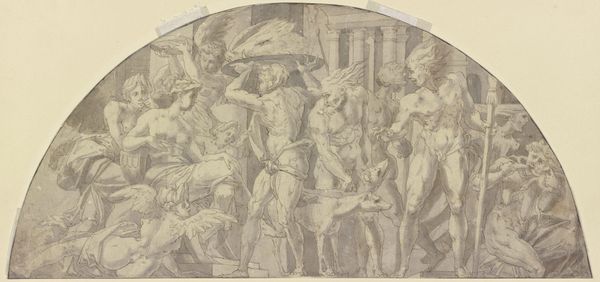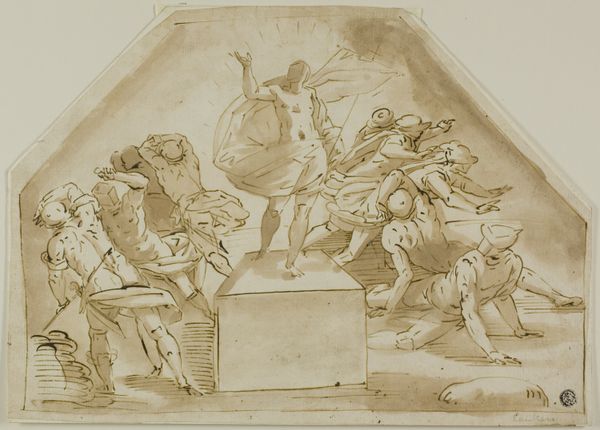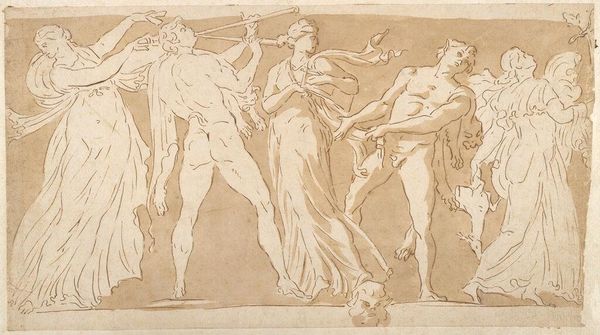
relief, sculpture
#
neoclacissism
#
greek-and-roman-art
#
relief
#
charcoal drawing
#
figuration
#
sculpture
#
history-painting
Dimensions: 60 cm (height) x 120 cm (width) (Netto), 67.1 cm (height) x 128 cm (width) x 4 cm (depth) (Brutto)
Editor: So this is Nicolai Abildgaard's "Achilles and the Centaur Cheiron," created between 1794 and 1798. It's currently housed at the SMK in Copenhagen. It’s interesting how it almost appears to be a drawing, a charcoal drawing, even though it’s a relief. What really jumps out is the starkness and formality of it; what do you see in this piece? Curator: I see a distillation of classical ideals, Editor. But it goes deeper. Observe the centaur Chiron, the wise tutor. He is teaching Achilles, isn’t he? More than that, he is transmitting a cultural legacy. The bow represents knowledge, skill, the burden of leadership, aimed straight at Achilles. This isn't simply an image of instruction. This is cultural memory in action. A passing of the torch. Editor: That's fascinating. The idea of it being less about a moment and more about a legacy... What about the austere style of the work itself? Does that contribute? Curator: Absolutely. The Neoclassical style deliberately evokes the perceived purity and moral authority of the ancient world. The lack of color, the emphasis on line and form… these choices underscore the seriousness, the timelessness, of the values being transmitted. It’s as if Abildgaard wants to scrub away anything superfluous and reveal the underlying essence of civilization. Don't you think that the positioning makes one consider which symbols speak to the heroic nature of both parties here? Editor: Definitely. Looking at it now, I can really see how much of a statement this piece is. I initially saw it as just a scene of teaching. Now I’m getting so much more of this cultural handing-down. Curator: And it works both ways! Every generation interprets these stories through their own lens. Our task is to understand what the original artist sought to convey and then see how that resonates - or doesn’t - in our contemporary world. It’s a conversation across time, you see.
Comments
No comments
Be the first to comment and join the conversation on the ultimate creative platform.

